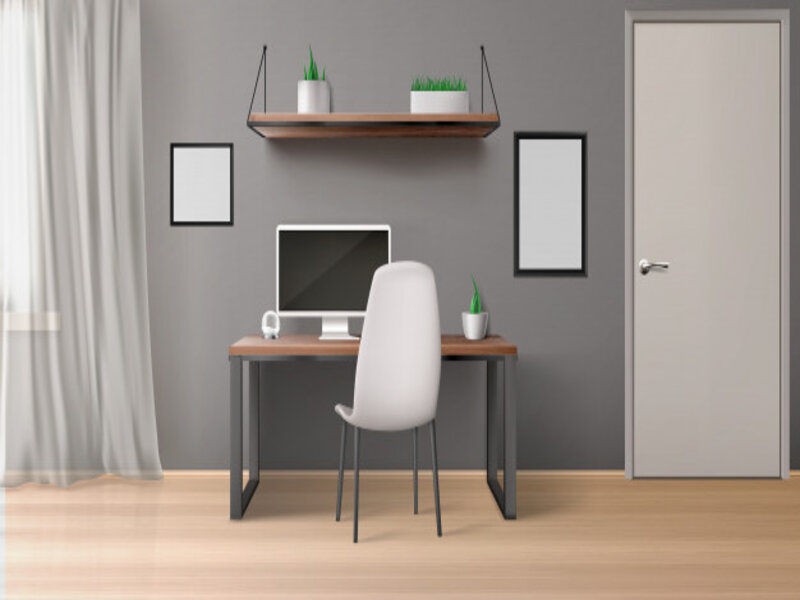Interior Design That Stimulates Learning
Interior Design & Decor5 minutes read
2084 views
2084 views
Famous Chinese philosopher Confucius once said to his mentees, “You do not open a book without learning something.” Since thousands of years ago, learning has always been such an important part of our lives.
Learning is beneficial to us because it can train our brain to deal with all sorts of challenges and keeps us engaged to understand the world around us better. Learning also develops our cultivations and values. It gives both learners and teachers good mental health if the learning process has been carried out well.
It is not unusual for us to not feel like learning sometimes so in this article, we will be sharing some interior design tips to stimulate and continue learning.
Let’s keep it up, fellow learners! Come and learn some useful interior design tips!

Image via Freepik
1. TO CREATE A BETTER LEARNING SPACE
-NATURAL SOURCE OF LIGHTS
According to a study in America which involved 21,000 students, students who studied in classrooms lit by natural light scored around 25 % higher on standardized tests compared to their peers who studied in the same school area.
Sunlight provides light and heat to give us warmth and illumination.The illumination of sunlight is sometimes more productive than the illumination of bulbs. To build an effective learning space, place study tables or desks near the windows to bring in more sunlight to brighten up the rooms.
Also, sunlight can trigger the production of vitamin D in your body. Vitamin D is capable of protecting your body from some diseases, helping the development of your immune system, stimulating calcium production, and increasing your bone density. Sunlight also functions as a natural antidepressant which leads to a stronger, healthier body and a happier mindset.
If your house or study room lacks sunlight, you may try using warm yellow light bulbs to replace the natural sunlight for efficient and sufficient illumination.

Image via Freepik
- FURNITURE
Other than study tables or desks, comfortable seats are also important for a focused and relaxed learning environment.
We highly recommend the ergonomic chair, as it is both comfortable and functional. This type of chair has the strongest adjustability and is most suitable for users who will be sitting on it for a long period of time. No matter if you are resting, working or reading, this chair can adapt to your own preferences through simple adjustments.
The features of the ergonomic chair include armrests, backrests, stability, and wheels for mobility. It is a better option compared to a non-ergonomic dining-type chair which does not have the same features.
Other than getting an ergonomic chair, you can also get some racks, cabinets or tables with built-in drawers to increase storage. Books and stationery can be placed there neatly to create a clean and tidy environment for learning. If the essential items are stored properly, they will be easy to locate anytime they are needed.
You can also label your drawers so that you can see clearly which drawer contains which and reduce time wastage for finding things.
It is also recommended to get a table lamp for your study room so that you can read or find something even in the middle of the night.

Image via Freepik
2. TO BUILD COLLABORATIVE LEARNING ZONES
-FURNITURE
Flexible seating is very important when more learners are involved. Also, the variety of seating arrangements can help generate ideas and encourage discussions as well as interactions with people.
Invest in movable furniture (desks, chairs, bean bags, blackboards,etc.) to place in the learning area to be moved around as required to suit the learners’ needs.
-BREAK SPACES
Break the spaces in the study room by using the arrangement of desks or tables, then differentiate each area for different functions.
The study room should not be too small or too big. If the space is too big, learners will tend to be less focused. If the study room is too small, the learners’ movement will be limited.

Image via Freepik
In conclusion, everyone has different expectations on how their own learning space should be but be sure to follow your personal style and tastes for designing your learning environment.
If you find this article useful, do feel free to share it with your fellow diligent learners and let them learn the useful tips mentioned above.
Request for quotes and we'll match you with a selection of Interior Designers!
Previous
Top 5 Tips for Planning a Family Kitchen


 Sign Up with Google
Sign Up with Google

.jpg)

